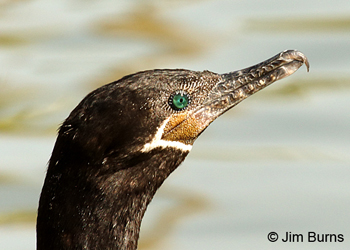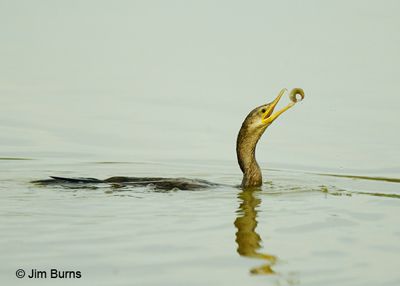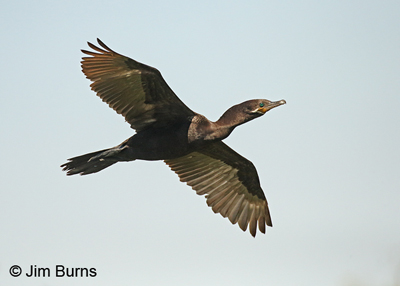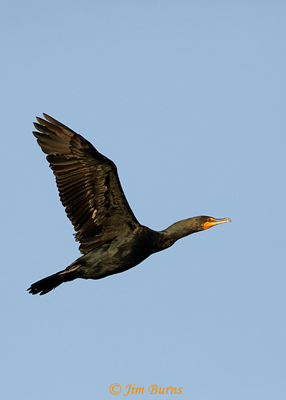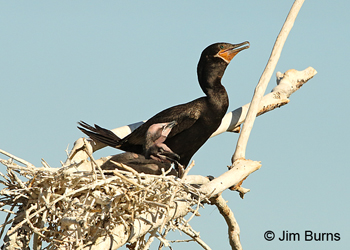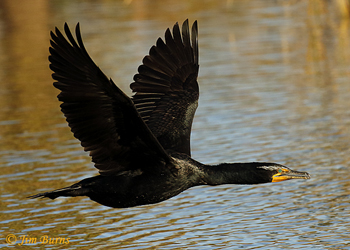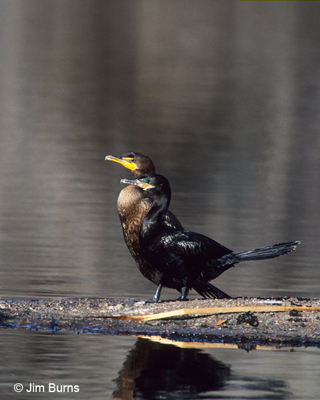
Our first state record was the Kino Springs bird in February of ’91, but we had chased to no avail the one at Picacho Reservoir the previous summer. An article in a 1993 Birding questioned the Kino Springs bird and made a case for it being just another Double-crested Cormorant. It wasn’t until 1998 that “Olivaceous” became “Neotropic” in a decision by the AOU, and the species was first recorded nesting in Arizona in 2003. And now . . .thousands are recorded every year on the Greater Phoenix Waterbird Survey. But still . . . I have trouble separating Neotropic from D-c, especially immatures and even some adults in non-breeding season.
Here’s my only excuse--both species are now so ubiquitous in the Valley I’ve stopped listing them and, sadly, stopped looking at them carefully enough to differentiate them. This, then, is a tutorial written mostly for my own benefit, but perhaps it will be of help to other birders. Here’s a shorthand version of the seven most salient diagnostic checkpoints, in decreasing order of reliability, visuals to follow with photographs:
1—Gular pouch (the bare skin at the base of the lower mandible where the bill attaches to the neck) color, shape, and size: Neo gular pouch is pale yellow, shaped like a “V” pointing backwards, and small, only half the size of the rest of the head; D-c gular pouch is bright yellow to orange, square or rounded at the rear, and large, the size of the rest of the head.
2—Gular pouch outline: Neo pouch is bordered by crisp, thin white line delineating shape of pouch; D-c pouch has no border, but beware that immature D-cs may show some indistinct white feathering in the pouch border area.
3—Supraloral area (bare skin above the lores, between the eyes and the bill): Neo supraloral is same color as bill itself, mottled brown to dirty yellow; D-c supraloral is brighter, often matching the orange of the gular pouch.
4—Flight profile: Neo head/neck extension in front of body equal to tail extension behind, giving the bird an evenly balanced flight profile; D-c head/neck extension twice that of tail behind, giving the bird an unbalanced, front-loaded profile.
5—Scapulars (individual “shoulder” feathers): Neo scapulars are pointed, D-c more rounded.
6—Overall size: Neo is 6 inches shorter than D-c.
7—Tail and bill size: Neo tail is longer, bill shorter than those of D-c.
There are several verities in that list. For numbers 1, 2, 3,and 5 you’ll need to be relatively close to perched or swimming birds to focus on the diagnostic features. For number 4, consider that you’ll see far more cormorants in flight, often mixed skeins containing both species, than you’ll see close individuals. The good news here is that gives you a lot more practice on the most difficult to distinguish identification keys. The bad news, of course, is that flybys can happen unexpectedly, pass quicker, and offer less time to really sort out diagnostics. And, of course, the last three characteristics in this list may prove nearly worthless unless birds of both species are side by side.
Here are a couple close-ups which compare gular pouches and supralorals.
Neotropic Cormorant adult breeding plumage head shot showing shape and outline of gular patch and dark supraloral |
Double-crested Cormorant adult breeding plumage head shot showing shape and outline of gular patch and bright supraloral |
Neotropic Cormorant juvenile showing pale yellow, V shaped gular pouch and dark supraloral |
Double-crested Cormorant pale breasted juvenile showing indistinct white feathering in gular pouch border area, but note the bright supraloral |
Neotropic Cormorant in flight (note the head and tail extensions appear equal, the V-shaped gular pouch is distinctly bordered in white, and the supraloral is dark) |
Double-crested Cormorant in flight (note the head extension appears longer than the tail extension, the squared off gular pouch has no white border, and the supraloral is bright orange) |
Neotropic Cormorant parent showing pointed scapular feathers |
Double-crested Cormorant showing rounded scapular feathers |
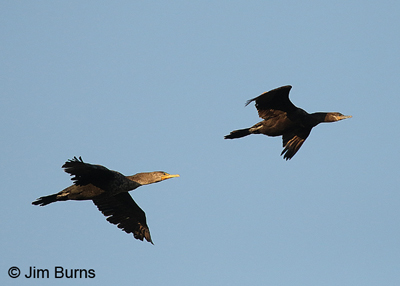
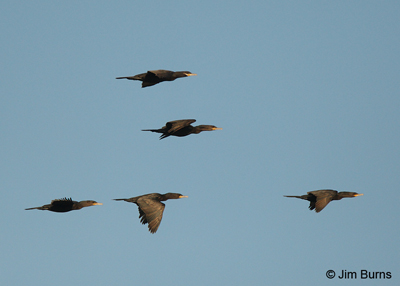
You’ll know your cormorant identification skills have evolved when you are sure you’ve seen both Neotropic and Double-crested in the same flyby skein. Enjoy.
